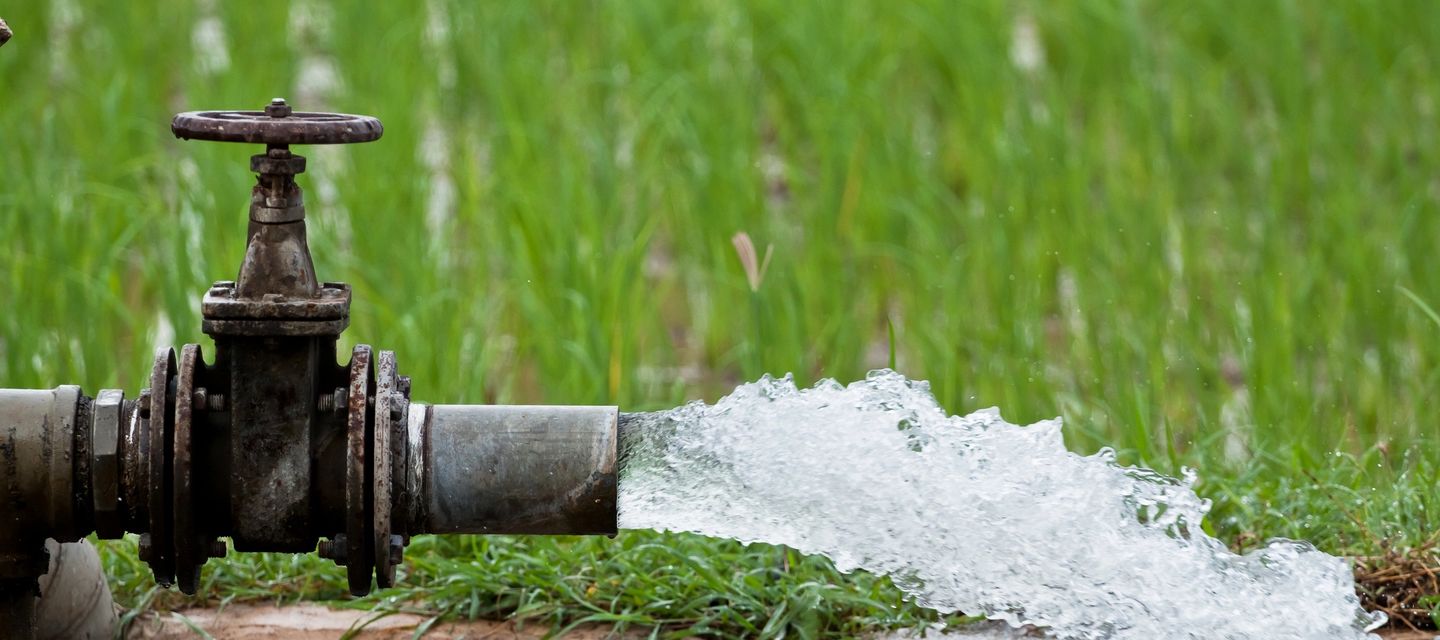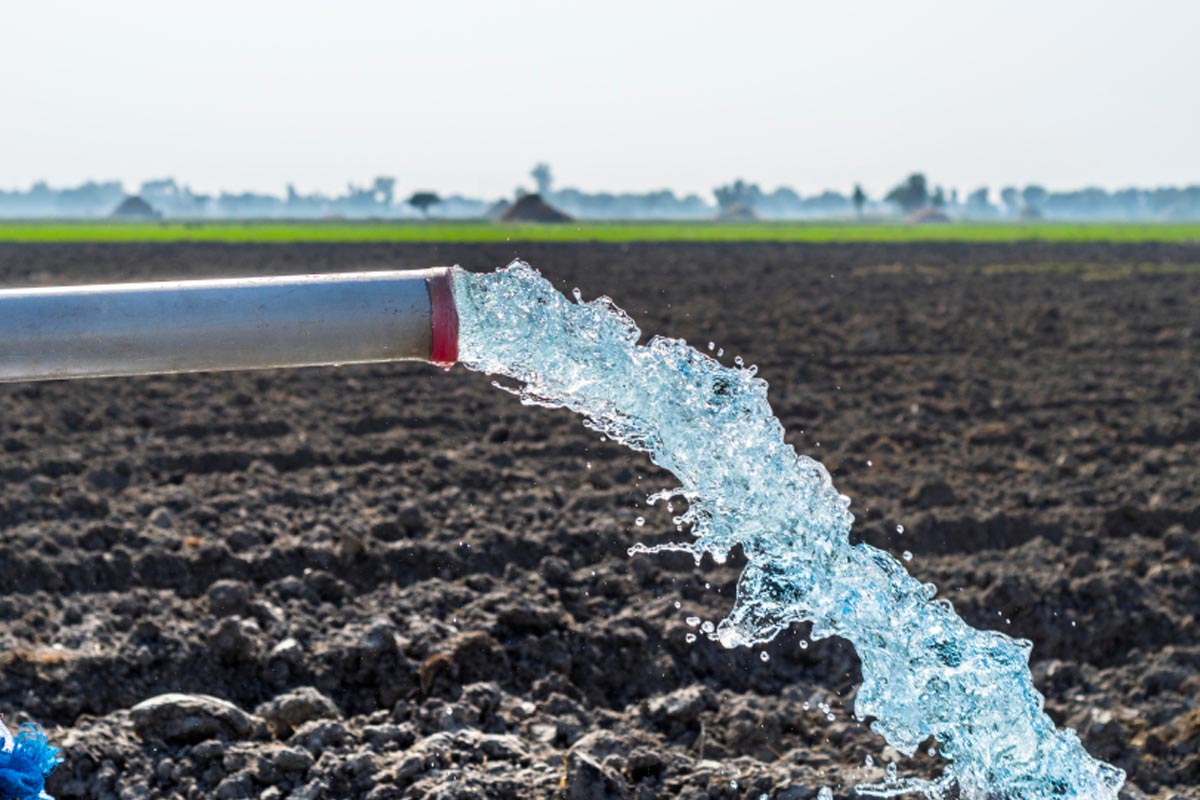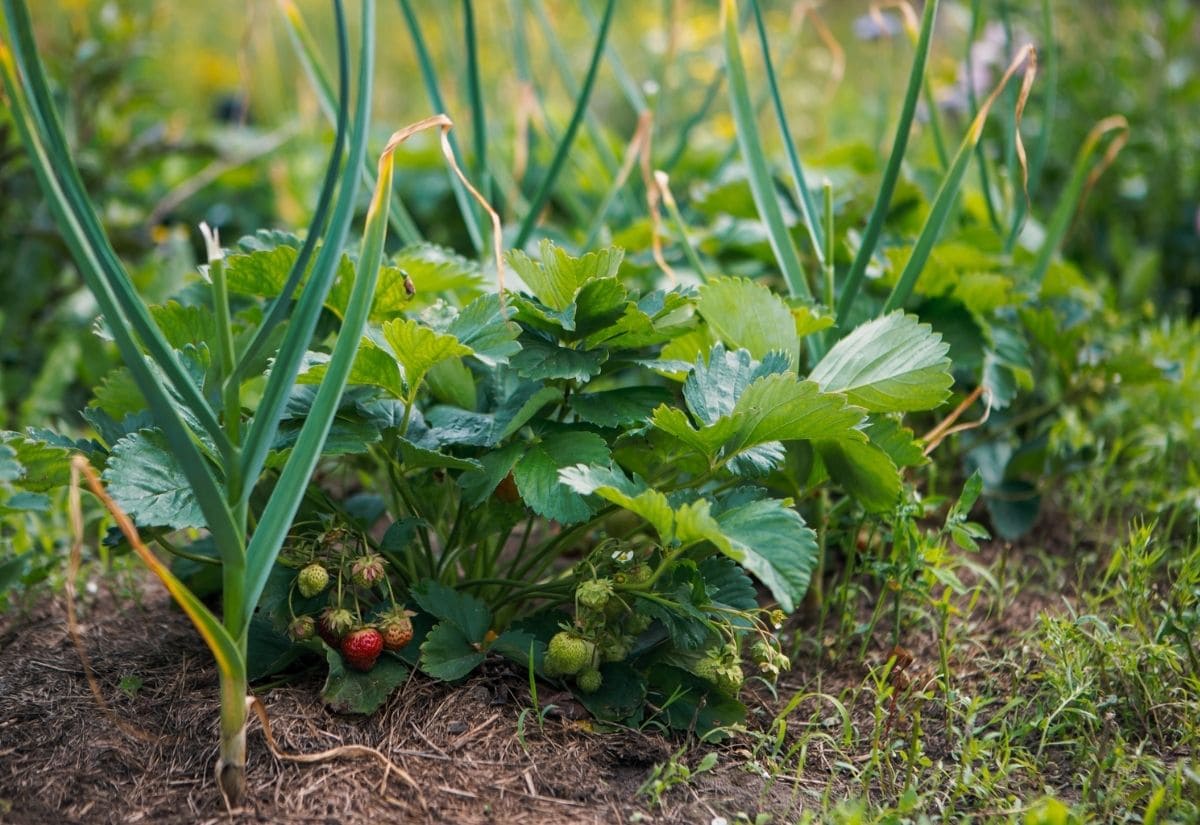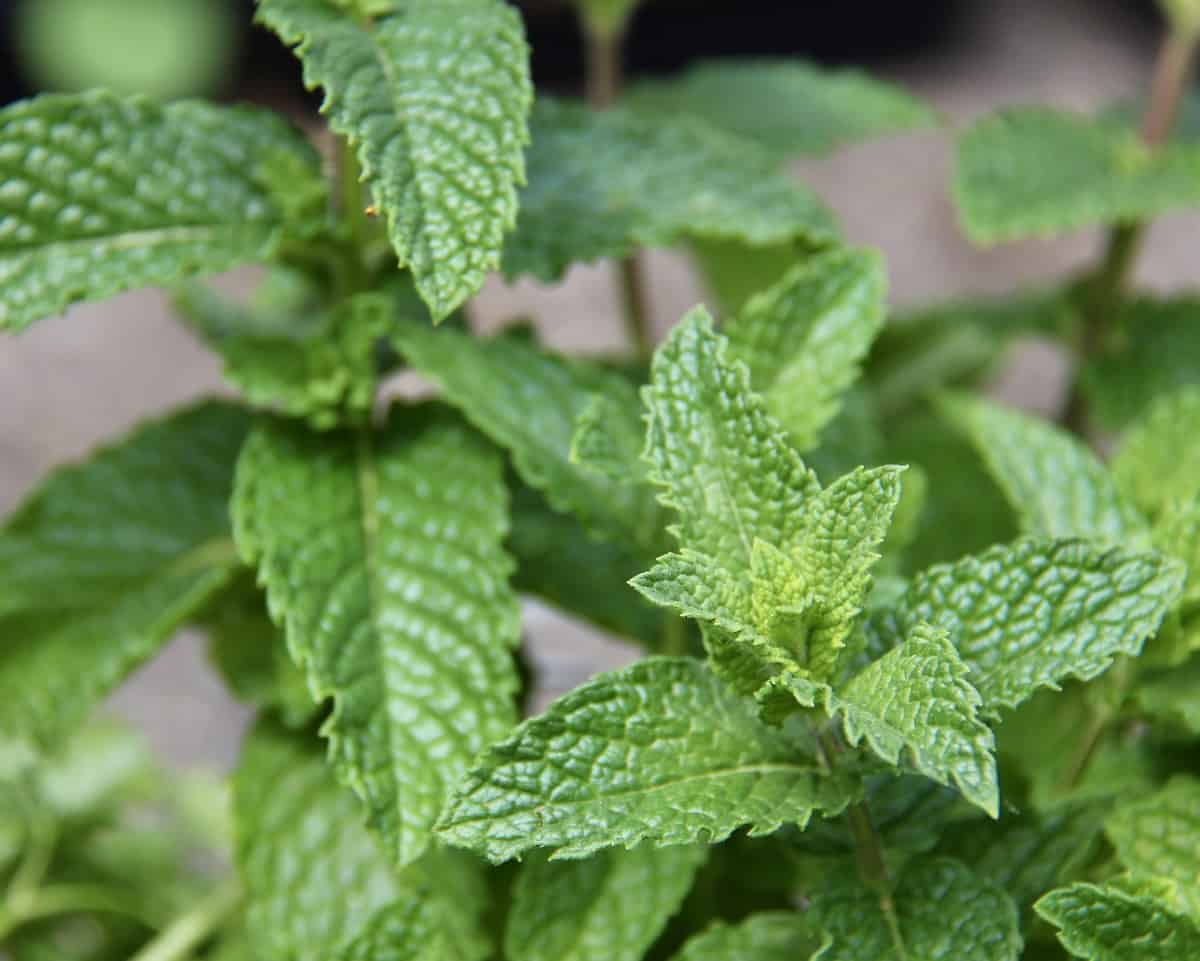Home>Gardening Basics>Tools and Equipment>What Is An Irrigation Well


Tools and Equipment
What Is An Irrigation Well
Modified: January 22, 2024
Learn about tools and equipment needed for an irrigation well installation. Find out the essentials and get started on your project today.
(Many of the links in this article redirect to a specific reviewed product. Your purchase of these products through affiliate links helps to generate commission for Chicagolandgardening.com, at no extra cost. Learn more)
Table of Contents
- Introduction
- Definition of an Irrigation Well
- Purpose of an Irrigation Well
- Types of Irrigation Wells
- Benefits of Using an Irrigation Well
- Factors to Consider Before Installing an Irrigation Well
- Planning and Designing an Irrigation Well System
- Drilling and Installation Process of an Irrigation Well
- Maintenance and Care for an Irrigation Well
- Potential Issues and Troubleshooting an Irrigation Well System
- Conclusion
Introduction
Welcome to the world of irrigation wells – an indispensable tool in the world of agriculture, landscaping, and gardening. As the demand for water-efficient practices grows, having a reliable and efficient irrigation system is crucial. With a well-designed and properly installed irrigation well, you can ensure a steady supply of water to nourish your plants and crops, even during periods of drought.
An irrigation well is a system that taps into a water source beneath the ground to provide water for irrigation purposes. Instead of relying solely on municipal water supplies or surface water sources, an irrigation well offers a self-sustaining solution for maintaining healthy vegetation. It allows you to have full control over your water supply, ensuring that your plants receive water when they need it most.
Whether you’re a farmer looking to irrigate your fields, a landscape professional caring for a large garden, or a homeowner wanting to maintain a lush and vibrant lawn, an irrigation well can provide numerous benefits. Not only does it help conserve water, but it also offers cost savings in the long run by reducing your reliance on external water sources.
In this article, we will explore the different types of irrigation wells, discuss their benefits, and provide helpful tips on planning, installing, and maintaining an irrigation well system. So, if you’re ready to take your irrigation practices to the next level, let’s dive in and learn more about the world of irrigation wells.
Definition of an Irrigation Well
An irrigation well is a drilled or dug well specifically created to draw water from an underground water source for the purpose of irrigating plants, crops, or landscapes. It is a key component of an irrigation system, providing a reliable and sustainable water supply for agricultural, commercial, and residential purposes.
The process of creating an irrigation well involves drilling or excavating a hole deep into the ground until it reaches an aquifer or water-bearing layer. The depth of the well will vary depending on the location and the specific water source. Once the well is in place, a pump is installed to extract water from the aquifer and deliver it to the desired irrigation system.
An important distinction of an irrigation well is that its primary function is to supply water for irrigation purposes, rather than for human consumption. While the water from an irrigation well may be safe for certain non-potable uses, it is typically not treated or tested to meet drinking water standards.
Irrigation wells can vary in size, depth, and capacity, depending on the specific needs of the irrigation system and the amount of water required. They can be hand-dug or drilled using specialized equipment, such as rotary drill rigs, to reach the desired depth and access the underground water source.
It is worth noting that in some regions, regulations and permits may be required for the installation and use of irrigation wells. These regulations are in place to ensure responsible water usage and prevent overextraction of groundwater resources. It is important to consult with local authorities or professionals in your area to understand any legal requirements before installing an irrigation well.
In summary, an irrigation well is a specialized well that taps into underground water sources to provide a sustainable and reliable water supply for irrigation purposes. By utilizing an irrigation well, users can have greater control over their water supply, supporting efficient and water-conscious irrigation practices.
Purpose of an Irrigation Well
The primary purpose of an irrigation well is to provide a consistent and reliable water supply for irrigating plants, crops, and landscapes. It offers several advantages over traditional irrigation methods, making it an essential tool for farmers, landscapers, and homeowners alike.
One of the main purposes of an irrigation well is to mitigate water scarcity challenges. In many regions, water resources are limited and subject to seasonal fluctuations or drought conditions. By having an irrigation well, individuals can tap into underground water sources that are often more resilient to these challenges. This ensures a continuous and uninterrupted water supply, even during dry spells or water restrictions.
An irrigation well also allows for greater control over water usage. With a well-designed system, water can be efficiently directed to specific areas, ensuring that plants receive the appropriate amount of moisture without excessive evaporation or runoff. This precision-based application of water helps conserve water resources and promotes optimal plant growth.
Furthermore, an irrigation well provides flexibility and independence in water management. Users can rely less on external water sources, such as municipal supplies or surface water bodies, and instead utilize their own groundwater. This reduces dependency on external factors that may be costlier or subject to external regulations, allowing for more autonomy in irrigation practices.
In addition to water conservation and autonomy, an irrigation well can lead to cost savings in the long run. By utilizing on-site water sources, users can reduce or eliminate the need to pay for water deliveries or incur high water bills. This is especially beneficial for large-scale agricultural operations or commercial landscapes that require significant water volumes on a regular basis.
Another purpose of an irrigation well is to improve the overall health and appearance of plants and crops. By providing a consistent and properly managed water supply, crops and plants can thrive and reach their full potential. This can result in higher yields, better quality produce, and more vibrant and lush landscapes.
Overall, the purpose of an irrigation well is to address water scarcity challenges, provide control over water usage, offer flexibility and cost savings, and enhance the health and vitality of plants and landscapes. It is a valuable investment for those seeking sustainable and efficient irrigation solutions.
Types of Irrigation Wells
There are several types of irrigation wells, each designed to cater to specific water needs and geological conditions. Understanding the different types can help users make informed decisions and choose the most suitable option for their irrigation requirements. Let’s explore some common types of irrigation wells:
1. Drilled Wells: Drilled wells are the most common type of irrigation well. They are created by using specialized equipment to drill deep into the ground until reaching an aquifer or water-bearing layer. These wells can vary in diameter and depth, depending on the specific water source and volume required. Drilled wells are typically more expensive to install but offer greater reliability and longevity.
2. Surface Wells: Surface wells, also known as shallow wells, are constructed by excavating a hole into the ground near a surface water source, such as a pond, lake, or stream. These wells tap into the water table close to the surface and are more suitable for smaller-scale irrigation needs. Surface wells tend to be more vulnerable to drought conditions and may require additional filtration or treatment due to potential contaminants present in shallow water sources.
3. Driven Wells: Driven wells are created by driving a pipe into the ground using a driving mechanism, such as a pile driver or water jetting. The pipe has perforations to allow water to enter and is driven to a specific depth to reach the water table. Driven wells are commonly used for residential irrigation systems and are relatively easy to install. However, their water capacity and longevity may be limited compared to drilled wells.
4. Agricultural Wells: Agricultural wells are designed specifically for large-scale farming operations. These wells are often deep and have high water output capacity to meet the water demands of crops over significant acreage. Agricultural wells may require special permits and regulations due to their larger scale and potential impact on groundwater resources.
5. Golf Course Wells: Golf course irrigation wells are commonly used to maintain the lush and green landscapes of golf courses. These wells are strategically located to provide adequate water coverage across the course. They are designed to meet the unique water demands of maintaining golf course turf while optimizing water usage efficiency.
6. Landscape Wells: Landscape wells cater to the irrigation needs of residential and commercial landscapes, gardens, and parks. These wells are typically shallow and provide water for small-scale irrigation systems. Landscape wells are designed to enhance the aesthetics and health of ornamental plants and outdoor spaces.
Each type of irrigation well has its pros and cons, and the choice depends on factors such as water availability, budget, land characteristics, and specific irrigation requirements. Consulting with a professional well contractor or irrigation expert can help determine the most suitable type of well for your needs.
Benefits of Using an Irrigation Well
Using an irrigation well offers numerous benefits for farmers, landscapers, and homeowners who rely on a steady water supply for irrigation. Let’s explore some of the key advantages of using an irrigation well:
1. Water Availability: One of the major benefits of using an irrigation well is the availability of water. By tapping into underground water sources, users have a reliable and consistent supply of water for irrigation, even during drought conditions or when other water sources may be scarce.
2. Water Conservation: With an irrigation well, users can optimize water usage by directing water precisely where it is needed. This helps to minimize water waste through evaporation or runoff, leading to significant water conservation. Additionally, using a well reduces dependency on surface water or municipal supplies, which may be subject to restrictions during dry periods.
3. Cost Savings: Utilizing an irrigation well can lead to cost savings in the long run. By relying on groundwater instead of purchasing water from external suppliers, users can significantly reduce or eliminate water bills. This is especially beneficial for large-scale agricultural operations or commercial landscapes that require substantial water volumes.
4. Increased Control: An irrigation well provides users with greater control over their water supply. They have the flexibility to irrigate their crops or landscapes on their own schedule, without relying on external water regulations or restrictions. This control allows for more efficient irrigation practices, resulting in healthier plants and improved crop yields.
5. Independence: Having an irrigation well grants independence from relying solely on municipal or surface water sources. Users can cultivate their own water supply, reducing the risk of water shortages or disruptions due to external factors. This independence contributes to the long-term sustainability and resilience of agricultural operations and landscaped areas.
6. Enhanced Plant Health: With a consistently available water supply, plants can thrive and grow optimally. Proper irrigation provided by an irrigation well ensures that plants receive the right amount of water, promoting deeper root development and healthy growth. This results in higher crop yields, more robust landscapes, and improved overall plant health.
7. Long-Term Investment: Installing an irrigation well is a long-term investment that can provide benefits for years to come. Well-maintained wells can offer many years of reliable service, reducing the need for reliance on external water sources. The initial investment in an irrigation well can yield significant returns in terms of water savings, crop productivity, and overall property value.
In summary, using an irrigation well offers several advantages, including water availability, conservation, cost savings, increased control, independence, enhanced plant health, and long-term investment benefits. By harnessing the power of underground water sources, users can ensure a sustainable and efficient approach to irrigation, benefiting both their land and their bottom line.
Factors to Consider Before Installing an Irrigation Well
Installing an irrigation well is a significant decision that requires careful consideration and planning. Before proceeding with the installation, it’s essential to evaluate several factors to ensure that the well meets your specific needs and complies with relevant regulations. Here are some key factors to consider:
1. Water Availability: Assess the availability of groundwater in your area. Consider the depth of the aquifer, the expected water yield, and the quality of the water. Conduct a groundwater survey or consult with experts to determine the feasibility of accessing a reliable water source for your irrigation needs.
2. Permits and Regulations: Research the local regulations, permits, and licensing requirements related to drilling and installing an irrigation well. These regulations may vary depending on your region and can include restrictions on well depth, water usage, and water extraction permits. Ensure compliance with all applicable laws before proceeding.
3. Budget and Cost Considerations: Evaluate the financial implications of installing an irrigation well. Determine the costs associated with drilling and well construction, equipment installation, and ongoing maintenance. Consider the potential long-term cost savings from reduced water bills and external water purchases to assess the financial viability of the project.
4. Water Needs and System Design: Assess the water requirements of your irrigation system. Consider factors such as crop type, landscape size, and evaporation rates to determine the capacity and design of the well and pumping system. Consult with irrigation experts to ensure that the well is appropriately sized for your specific needs.
5. Well Location: Choose a suitable location for the well, taking into account access to the water source, topography, and proximity to other infrastructure. Consider factors such as ease of installation, maintenance accessibility, and potential impacts on neighboring properties.
6. Water Quality: Evaluate the quality of the groundwater to ensure its compatibility with your irrigation requirements. Conduct water tests to assess factors such as pH, mineral content, and potential contaminants. Water treatment systems may be necessary to address any water quality issues that may impact plant health or irrigation equipment.
7. Professional Expertise: Seek the guidance of professionals experienced in well drilling and irrigation system design. Consult with well drillers, hydrologists, or irrigation specialists to assess the feasibility of an irrigation well on your property. Their expertise can help in gathering key data, such as water table depth, underground geology, and the appropriate well design for your specific needs.
Taking the time to consider these important factors before installing an irrigation well will help ensure a successful and sustainable water supply for your irrigation needs. By carefully assessing these factors, you can make informed decisions and move forward with confidence in implementing an effective irrigation solution.
Planning and Designing an Irrigation Well System
Proper planning and designing are crucial steps in implementing an efficient and effective irrigation well system. Careful consideration of various factors will help ensure that the system meets your water needs and operates smoothly. Here are some key steps to consider when planning and designing an irrigation well system:
1. Water Requirement Assessment: Determine the required water volume for your irrigation needs. Consider factors such as the area to be irrigated, crop types, and local climate conditions. Calculate the water demand to ensure that the well system can supply an adequate amount of water.
2. System Layout: Design the layout of your irrigation system, including the positioning of the well, pipes, pumps, and sprinklers. Evaluate the topography and slope of the land to determine the best placement for the well and the most efficient distribution of water. Optimize the system design to minimize friction losses and ensure even water distribution.
3. Pump Selection: Select an appropriate pump based on the system requirements, including water demand and pressure needs. Consider factors like pump capacity, energy efficiency, and pump type (submersible or above-ground) to ensure optimal performance and longevity.
4. Equipment Sizing: Size the pipes and valves appropriately to minimize pressure loss and ensure efficient water flow. Consider the distance to be covered, the elevation changes, and the desired flow rate to select the correct pipe diameter and choose the right valve sizes to control water flow.
5. Electrical Requirements: Evaluate the electrical needs of the well system, considering the power requirements of the pump, control panels, and any additional equipment. Ensure that the electrical supply is adequate, and consult with an electrician to properly install and connect the well system to the power source.
6. Automation and Control: Consider incorporating automation and control features into the system design. This may include timers, moisture sensors, or weather-based controllers. Automation can help optimize water usage, prevent overwatering, and provide convenient control of the irrigation system.
7. Backup Systems: Plan for backup systems or alternative water sources in case of well system failures or water shortages. This could involve setting up a connection to a secondary water supply, such as a rainwater harvesting system or a municipal water source, to ensure continuity in case of emergencies.
8. Regulatory Compliance: Ensure compliance with local regulations and obtain any necessary permits or approvals before proceeding with the installation of the well system. Be aware of any restrictions or guidelines pertaining to well construction, water usage, and environmental considerations.
9. Maintenance Plan: Develop a maintenance plan for the irrigation well system to keep it in optimal working condition. Regularly inspect and maintain the well, check for potential issues or leaks in the system, and ensure proper filtration and cleaning of the water supply.
By following these steps and involving experienced professionals, you can plan and design an irrigation well system that meets your water needs, provides efficient water distribution, and ensures the long-term viability of your irrigation practices. Proper planning and design are key to achieving a sustainable and reliable irrigation solution.
Drilling and Installation Process of an Irrigation Well
The drilling and installation process of an irrigation well requires specialized equipment and expertise to ensure a successful and efficient water supply. Here is an overview of the typical steps involved in the drilling and installation process:
1. Survey and Site Preparation: Before drilling begins, a hydrogeological survey is conducted to assess the groundwater availability and characteristics in the area. The site is then prepared by clearing any obstructions and ensuring easy access for drilling equipment.
2. Well Drilling: A drilling rig is brought to the site to penetrate the ground and reach the aquifer or water-bearing layer. The type of drilling method used will depend on factors such as the soil composition, desired well depth, and local regulations. Popular drilling methods include rotary drilling or percussion drilling.
3. Casing Installation: As the well is drilled, a steel or PVC casing is inserted to prevent the wellbore from collapsing. The casing is secured in place with cement or grout, creating a stable structure for the well.
4. Well Development: Once the well is drilled and the casing is in place, the well is developed to remove any drilling debris, improve water flow, and enhance well performance. This is typically done by pumping water out of the well to flush out sediment and stabilize the aquifer around the well screen.
5. Installation of Screen and Pump: A well screen is placed at the bottom of the well, allowing water to flow into the well while preventing the entry of coarse sediments. A submersible pump or above-ground pump is then installed inside the casing to extract water from the well.
6. Electrical Connections: If using an electric pump, electrical connections need to be made to power the pump and control its operation. An electrician should handle the wiring and connections to ensure safety and compliance with electrical codes.
7. Installation of Well Cap or Cover: A well cap or cover is placed on top of the well to protect it from debris, contaminants, and unauthorized access. The cap or cover is typically fitted with a vent to equalize pressure inside the well.
8. Water Testing: Once the well installation is complete, water samples are collected and sent for testing to determine the quality of the water. This step is essential to ensure that the water meets the required standards for irrigation purposes.
9. System Integration: The well system is integrated with the irrigation system, including connecting the pipes, valves, and controls. This ensures seamless water distribution to the desired irrigation areas and allows for proper management and control of the irrigation system.
10. Startup and Commissioning: The well system is started up, and initial performance tests are conducted to ensure proper functioning and flow rates. Any necessary adjustments or fine-tuning are made during this phase to optimize the system’s performance.
It is important to note that the drilling and installation process may vary depending on factors such as location, well depth, and local regulations. Working with experienced well drillers and professionals in the field will ensure that the drilling and installation process follows best practices and adheres to all necessary guidelines and requirements.
Maintenance and Care for an Irrigation Well
Maintaining and caring for an irrigation well is essential to ensure its longevity, efficiency, and optimal performance. Regular maintenance and proper care can prevent issues, prolong the life of the well, and ensure a consistent water supply for irrigation. Here are some important maintenance practices to consider:
1. Regular Inspections: Conduct routine inspections of the well components, such as the casing, pump, pressure tank, and electrical connections. Look for signs of damage, corrosion, or wear and address any issues promptly.
2. Well Cleaning: Periodically clean the well of debris, sediment, and mineral build-up that may accumulate over time. Consult with a professional well contractor to determine the appropriate well cleaning method, such as brushing, jetting, or surging.
3. Check Water Quality: Regularly test the water quality from the well to ensure it meets the desired standards for irrigation purposes. This includes monitoring factors such as pH levels, mineral content, and potential contaminants. If any issues are detected, consult with a water treatment professional to implement appropriate solutions.
4. Pump Maintenance: Follow the manufacturer’s guidelines for pump maintenance, which may include regular lubrication, inspection of seals and bearings, and cleaning of pump components. Ensure that the pump is functioning correctly and address any performance issues promptly.
5. Inspect and Maintain Wiring: Regularly check the electrical connections and wiring associated with the well system. Look for signs of wear, damage, or loose connections. Request the assistance of a qualified electrician if any repairs or replacements are needed.
6. Protect the Well: Protect the well from potential contaminants and debris. Maintain a clear area around the well and avoid activities that could introduce pollutants or degrade water quality. Install a protective well cap or cover to prevent unauthorized access or entry of foreign objects.
7. Monitor Water Usage: Keep track of water usage and ensure it aligns with the capacity of the well system. Excessively high water demand or prolonged periods of overworking the pump can put strain on the well and impact its performance. Properly manage irrigation schedules and adjust watering practices as necessary.
8. Annual Maintenance Check: Schedule an annual maintenance check with a professional well contractor. They can perform a comprehensive inspection, test pump performance, evaluate system components, and provide recommendations for any necessary repairs or upgrades.
9. Document Maintenance Activities: Maintain records of maintenance activities, water test results, and any repairs or adjustments made to the system. This documentation helps track the history of the well system and facilitates troubleshooting and future maintenance planning.
10. Stay Informed: Keep up-to-date with current best practices, industry guidelines, and any regulatory changes related to well maintenance and care. Stay informed about new technologies or advancements that could improve the efficiency or performance of your irrigation well system.
Implementing regular maintenance and care for your irrigation well will help ensure its reliability, efficiency, and longevity. By taking proactive steps to address any issues and following recommended maintenance practices, you can maximize the performance and lifespan of your well system, allowing for consistent and efficient water supply for your irrigation needs.
Potential Issues and Troubleshooting an Irrigation Well System
While irrigation well systems are generally reliable, issues can still arise from time to time. Being aware of potential problems and knowing how to troubleshoot them can help you address any issues promptly and ensure a continuous water supply for your irrigation needs. Here are some common problems that may occur with an irrigation well system and troubleshooting techniques:
1. Lack of Water: If your well is not producing water or the water flow is inadequate, several factors could be at play. Check the power supply to the pump, ensuring it is connected and functioning correctly. Verify that the pump is operating and the pressure tank is pressurized. If everything seems to be in order, consider checking the well screen, intake, or foot valve for obstruction or sediment buildup.
2. Low Water Pressure: Low water pressure can result from issues such as a clogged filter, worn-out pump, or air pocket in the system. Check and clean the filter or screen to remove any debris that may be obstructing water flow. If the pump is older or showing signs of wear, it may require maintenance or replacement. Bleeding or purging air from the system can resolve pressure issues caused by air pockets.
3. Fluctuating Water Levels: If your well experiences fluctuating water levels, it may signify problems with the water table or the well’s yield. Factors such as drought conditions, a declining aquifer, or excessive water usage may contribute to this issue. Consulting with a professional well contractor can help evaluate the situation and determine appropriate measures such as water conservation practices or adjusting irrigation schedules.
4. Poor Water Quality: If the water from your well has unpleasant odor, taste, or discoloration, it may indicate water quality issues. Conduct water tests to identify the source of the problem, which could include mineral content, bacterial contamination, or chemical pollutants. Implement appropriate water treatments, such as filtration, chlorination, or other remedies recommended by water treatment professionals, to address the specific water quality concerns.
5. Pump Motor Failure: If the pump is not functioning or failing to start, it may indicate electrical issues, a malfunctioning pressure switch, or a damaged pump motor. Check the electrical connections and ensure power is reaching the pump. Inspect the pressure switch for any faults or damage. If the pump motor is suspected to be the issue, it may require repair or replacement by a qualified technician.
6. Noise or Vibration: Unusual noise or excessive vibration from the pump or well system can indicate mechanical issues or imbalances. Inspect the pump and motor for loose or worn parts, damaged impellers, or misalignment. A qualified technician can help diagnose and resolve any mechanical issues to restore proper pump function and reduce noise or vibration.
7. Leaks or Pipe Issues: Water leaks or damage to pipes can result in reduced water pressure or loss of water. Inspect the system for any visible leaks or signs of water damage. Check pipe connections, valves, and fittings for integrity. Repair or replace any damaged components to restore proper water flow.
If you encounter any issues with your irrigation well system that you are unable to troubleshoot or resolve on your own, it is recommended to seek assistance from a professional well contractor or irrigation specialist. They have the knowledge and experience to diagnose and address more complex problems, ensuring the continued functionality and efficiency of your irrigation well system.
Conclusion
Installing an irrigation well is a valuable investment for those seeking a reliable and sustainable water supply for their irrigation needs. With proper planning, design, and maintenance, an irrigation well can provide several benefits, including water availability, conservation, cost savings, increased control, independence, enhanced plant health, and long-term investment returns.
Before installing an irrigation well, it is crucial to consider factors such as water availability, permits and regulations, budget, water needs, well location, and water quality. Engaging with professionals and conducting thorough assessments will ensure that the well system aligns with your specific requirements and complies with all necessary guidelines and regulations.
Creating a well-designed and properly installed irrigation well system involves drilling the well, installing the necessary components such as pumps and screens, and integrating it with the irrigation system. Following best practices, working with experienced well contractors, and regularly maintaining and caring for the well system will maximize its efficiency, performance, and lifespan.
While potential issues may arise with an irrigation well system, proactive troubleshooting and timely repairs can minimize disruptions and keep the system running smoothly. Regular inspections, water quality testing, pump maintenance, and addressing any problems promptly are essential for the continued success of the well system.
In conclusion, an irrigation well is an invaluable tool for ensuring a reliable and sustainable water supply for agricultural, commercial, and residential irrigation needs. By investing in proper planning, installation, and maintenance, individuals can reap the benefits of water efficiency, cost savings, increased control, and healthier plant growth. With a well-designed and well-maintained irrigation well system, users can take control of their water supply and promote resource sustainability for a greener and more productive future.










